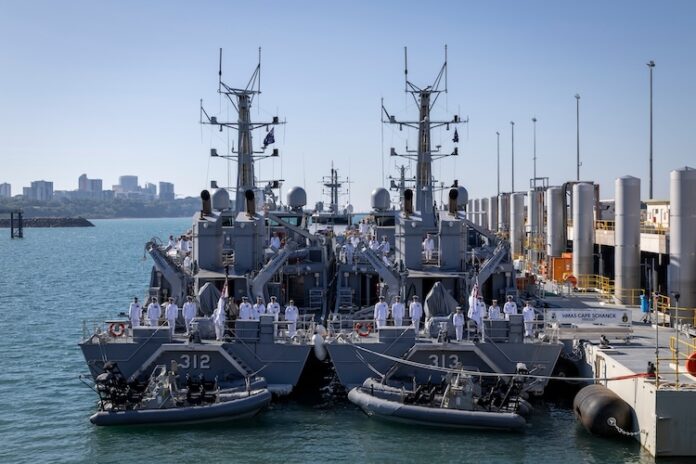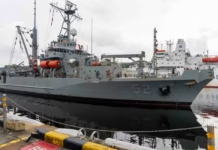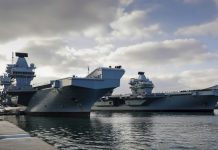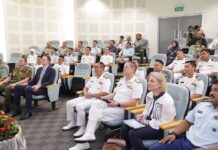
By Nick Tate*
The good thing about the share of GDP as a measure of defence spending is that it’s simple and comparable. The bad thing is that it is a poor guide to whether the country can sustain and win a fight. (From: the Strategist. The Australian Strategic Policy Institute.)
Far better is to focus on the capability that’s needed to keep the country safe. A defence share of GDP will then fall out of that. No doubt it would be higher than the current 2.0 percent. And in focusing on capability, we need to be looking particularly at the unglamorous things that sustain armed forces in action.
The 2024 National Defence Strategy calls for deterrence by denial, a sharp force and hardened northern bases. That means more than buying ships or aircraft. It means fuel in place, repair yards that work, deployable command systems, and ready infrastructure that can’t be improvised in a crisis. ASPI’s John Coyne has said it clearly: logistics and economic enablers are what turn defence spending into real military power. Raelene Lockhorst points to the defence’s land holdings, workforce and fuel as constraints. She’s right. Without them, nothing moves.
Still, debate slides back to major equipment. The National Defence Strategy wants minimum viable capability delivered fast and then built up. That’s the spirit of agility. Too often the concept of minimum viable capability is twisted into doing the bare minimum and pushing enablers to the back of the queue. That’s not agility. It’s risk.
The Ghost Shark robo-submarine program illustrates how equipment alone is not enough. The $1.7 billion spending on the program announced this month puts the program into volume production, which is good. But provision of the enablers that turn the submarines into operational power—secure basing, weapons handling, shore power and maintenance—is still unclear. These must be locked in early.
Supporters of basing policy on the GDP ratio—a higher ratio—like the signal it would send to Washington and industry. But the percentage itself won’t refuel a Hornet at Tindal or open a wharf in Darwin. It doesn’t necessarily equal capability.
Logistics are central. The National Defence Strategy put stockholding and supply chains on the agenda, but unless we make early, minimum viable improvements, forward deployment of combat power becomes symbolic. Capability isn’t just about shiny new kit; it’s also about whether you can keep it operating under stress.
Look at the states. The Northern Territory government’s 2024–25 infrastructure program is worth $4.42 billion, while Defence is separately upgrading RAAF Darwin, RAAF Tindal and the tri-service Larrakeyah Defence Precinct in Darwin through the Resilient Bases initiative. The adequacy of roads and utilities around Darwin and Katherine, which are not part of the bases program, also affects readiness.
In Western Australia, the national government has committed $12 billion to naval infrastructure at Henderson. The state’s $11.5 million workforce package will support 435 training places in crucial shipbuilding and maintenance trades such as fabrication. South Australia has the federally funded $480 million Skills and Training Academy building the skilled workforce that underpins shipbuilding, sustainment and other Defence capabilities. Queensland, NSW and Victoria back their defence industries in other ways. While those states’ efforts are hard to connect with defence directly, they lift the national system that sustainment relies on. They should be recognised when we talk about national capacity and defence spending as a whole.
And under all of this sits critical infrastructure. The Security of Critical Infrastructure Actnow covers ports, fuel, communications and more. It’s part of defence capability, though spending under it may not count towards the budget or the defence share of GDP. The Defence establishment’s Future Energy Strategy treats assured fuel and energy supply as integral to defence capability and therefore to combat power itself.
So let’s test what matters. Among the questions that the government must address are how many days of fuel are at northern bases? How fast can missiles be reloaded? How long does it take to turn a ship around? How quickly can a battalion-sized, combined-arms battlegroup be deployed to the Top End and kept operational? If those metrics improve, the GDP ratio will take care of itself.
We should spend what’s needed, not what looks neat. A single ratio gives false comfort. Real strategy is about usable power — ready ships, aircraft, and bases that work when they’re called on.



